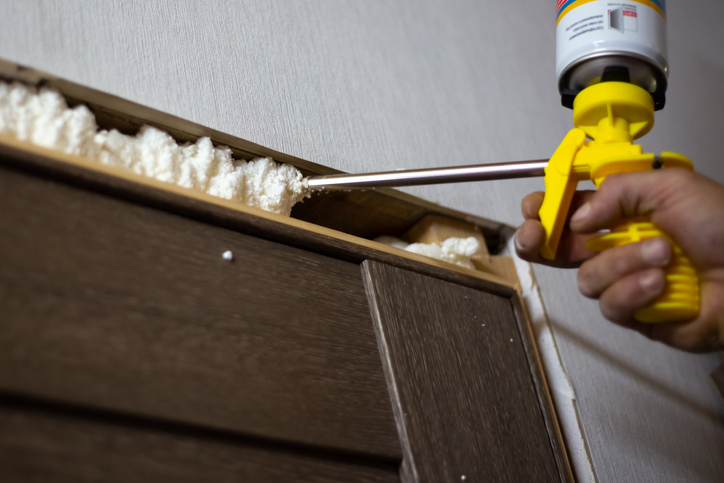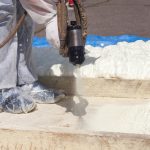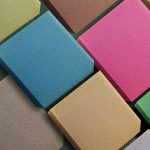Polyurethane: a Multifaceted Chemical Formula
The polyurethane chemical formula is incredibly versatile; it lends itself to the creation of many different products. Polyurethane is flexible, has a high impact and abrasion resistance, strong bonding and electrical insulation properties, and is a relatively inexpensive material when compared to thermoplastics.
What can the polyurethane chemical formula create? How is it made and where is it found in our environment? We explore all these questions and more below.
Polyurethane Chemical Formula Overview
The polyurethane chemical formula was first discovered in 1937 by Otto Bayer. However, it wasn’t available for commercial use until the 1950s. The chemical reaction involves the exothermic condensation reaction of an isocyanate and a hydroxyl-containing compound, which is usually a polyol.
The reaction occurs at room temperature and can take a few seconds to a few minutes to complete. The reaction time mostly depends on the choice of isocyanate and takes place within polyurethane processing equipment.
Where is the Polyurethane Chemical Formula Used?
The polyurethane chemical formula can be found in a variety of places, including the aerospace, military, medical, construction, electronics and appliances, sports equipment, and automotive industries. Because it can be made into flexible or rigid foam, coatings, adhesives, sealants, and elastomers, polyurethane is perfect for unique applications.
Aerospace
Polyurethane foam is the most common form of polyurethane used in the aerospace industry. Flight deck pads, passenger cabin walls, ceilings, storage containers, class and section dividers, and even elements of the lavatory are insulated, filled, or coated with various types of polyurethane foam. Water-based polyurethanes can also be found in coatings for aircraft exteriors, and acrylic-based polyurethanes are used for window panes and exterior light coverings.
Military
Polyurethane foam is commonly used in everything from protective equipment like helmets to large-scale projects like insulating aircraft carriers. It can also be used to fortify diving equipment, provide cushioning in seat pads, and be used in certain areas of ship construction.
Medical
Because of polyurethane’s biocompatibility, its foam form is commonly found in devices that are implanted in the human body. These include artificial hearts, pacemakers, dialysis devices, and more. You may also find polyurethane in tubing, bedding, surgical drapes, wound dressings, gloves, garments, and molded devices.
Construction
More builders are using polyurethane foam as the material begins to improve. You may find polyurethane in panels, door and window insulation, and decorative moldings. Because of its sound-dampening abilities, polyurethane is a great material for homes and commercial structures that see high amounts of traffic.
Electronics and Appliances
Polyurethane is commonly found in domestic goods like refrigerators, dishwashers, washing machines, and more. It helps maintain internal temperatures and offers thermal isolation from exterior environments. Polyurethane coating can also be used to apply a wide variety of colors to the outside case, reducing the risk of rust over time.
Sports Equipment
A common use for polyurethane foam is in helmets. They’re lined with foam that’s light enough to ensure player comfort and strong enough to resist significant impact. Other common uses are for protective padding, floor mats, certain types of balls, athletic shoes, surfboards, and more.
Automotive
The automotive industry arguably has the most number of uses for polyurethane foam, coatings, and sealants. Internally, it can be found in car seats, head and armrests, floor underlayment, steering wheels, and instrument panels. Externally, it’s used on spoilers, bumpers, ceilings, doors, and windows. It can also be applied as a coating to the vehicle exterior for glossiness and to protect windshields and windows from fog and other elements.
How the Polyurethane Chemical Formula is Applied
Polyurethane foam is applied using special equipment and mix heads. These include high-pressure, low-pressure, gas nucleation, and spray equipment, paired with L-style, straight-style, and spray-style mix heads. This equipment mixes the proper chemicals and facilitates the spraying capabilities for a wide range of applications.
Work with Linden Polyurethane for Your Polyurethane Equipment
Linden Polyurethane has been supplying polyurethane equipment to a wide range of industries for decades. Founded in 1985, we are a world-class designer, engineer, manufacturer, and service provider for standard and custom polyurethane processing machinery.
We pride ourselves on having pioneered polyurethane innovations and refining tools and equipment used by countless industries through control integration, precision machining, and a relentless approach to continual improvement.
Our capabilities allow us to design and manufacture different types of polyurethane metering, processing, distribution, and storage systems in-house, as well as provide repair for equipment manufactured by other organizations.
Help Us Understand Your Polyurethane Equipment Needs
When you need polyurethane equipment, we’re here to help you decide which combination of machinery and mix head is right for you. Contact our team or request a quote today.





